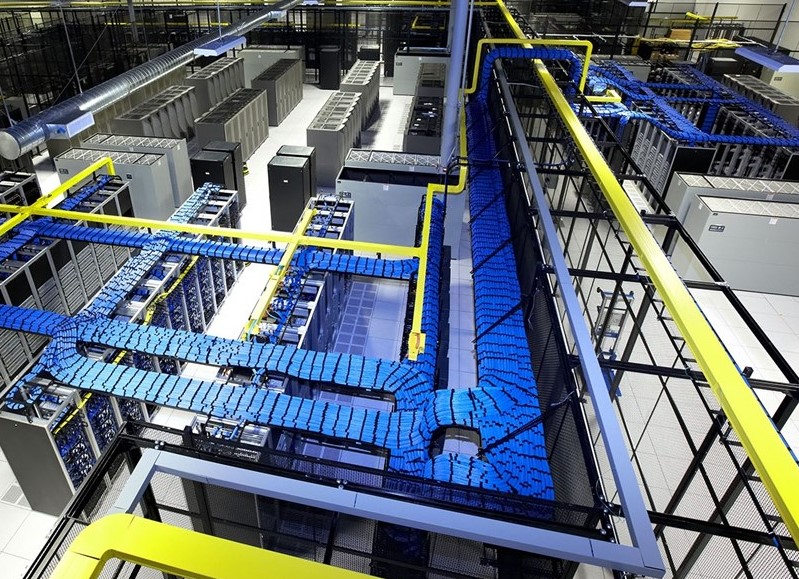
Keeping Up with New Security & Speed Demands on a Tight Budget
Today, government data centers are expected to meet ever-increasing performance demands – more data, faster speeds, and tighter security – often with tight budgets. The stakes for meeting these demands are high, so it’s the good news that achieving ever-better performance is possible, even on lean budgets.
Here, I’ll outline two solutions that can keep data centers up to date even under budgetary pressure: leveraging the cloud for certain applications to reduce your CapEx budget and taking other measures to reduce your budget overall.
1: Shift to the Cloud
“Migrating to the cloud” is perhaps the most-discussed and least-understood data center phenomena of our day. Nearly everyone has heard of cloud migration, but many people (including those often most eager to make the transition) aren’t fully aware of what that migration entails.
And while this lack of understanding can lead to inefficient and costly cloud migrations, the cloud can also be a powerful cost-saving and performance-enhancing tool for data centers.
One of the main appeals for government data center operators is that strategically shifting certain applications to the cloud allows you to achieve equal or better performance with less (or no) in-house equipment. This, in turn, means you can reduce your CapEx budget in favor of a slightly higher OpEx budget.
Granted, cloud costs in the OpEx budget will likely fluctuate. But because the cloud lets an organization scale up and down quickly, based on real-time needs, it enables you to pay for only what you need when you need it. In-house data centers, on the other hand, often require the purchase and installation of equipment that ends up sitting idle except for at peak usage times – not an especially cost-effective way to operate.
The cloud also has the advantage of reducing in-house use of electricity for powering and cooling servers, which could offset some of the increased OpEx expenses.
DOD data centers can take advantage of all the cloud has to offer even if they don’t have in-house cloud expertise by using DISA’s milCloud infrastructure, which offers a range of secure and compliant functionalities for DOD applications.
The key to ensuring that a cloud migration goes as planned is to acknowledge upfront that there is no one-size-fits-all solution. The strategy part of strategically shifting is crucial here: working with a knowledgeable consultant to determine which applications you can shift to enjoy the greatest gains in efficiency and performance will be key to finding a solution that meets your performance and budgetary needs.
2: Reduce Budgets Outright
A partial cloud migration will let you shift certain expenses from CapEx to OpEx, but it may not substantially reduce the overall cost of running your data center. To do that, you’ll need to look elsewhere. I recommend starting with your bandwidth.
First, consider reducing your OpEx budget by renting or buying bandwidth via a dark fiber (i.e., a fiber-optic cable that’s currently unused or underused by whatever company laid it) instead of paying an ISP. Dark fiber offers four major benefits to government data centers:
- Greater speeds at lower costs: We’ve seen county-level users increase their speeds by 10x while reducing monthly costs by 75 percent. Every case will be different, but there is tremendous potential here.
- Greater cost control: You’re paying for the fiber itself, meaning costs won’t change even if you increase the amount of data you send through it (not so with an ISP, where you pay for your data use).
- Physical redundancy: When selecting dark fiber, it’s possible to choose geographically disparate cables, which reduces the likelihood of outages.
- Full configuration control: ISPs configure networks as they see fit; when using dark fiber, in-house network engineers can configure a network to custom specifications.
In the long term, dark fiber is likely a cost-effective way to achieve 100 gig speeds, which DISA connections now enable.
But if dark fiber makes sense at your data center, it’s important to consider that the transition will involve certain upfront CapEx costs. Notably, you’ll have to upgrade your routers and potentially add DWDM equipment to enable your new, faster-speed connections. As you seek replacements, keep in mind that OEMs typically mark up optics gear by about 350 percent. So don’t be afraid to look at other options as other government agencies have done before.
Go Lean to Future-Proof Your Data Center
Outsourcing non-core functions to secure cloud providers, tapping into the power of dark fiber, and avoiding unnecessary equipment markups can help government data centers do more with less. This will be an increasingly important capability as data use, speed expectations, and security demands continue to increase. Making these adjustments now will position data centers to continue performing at expected levels while also becoming nimble enough to adapt more quickly moving forward.


